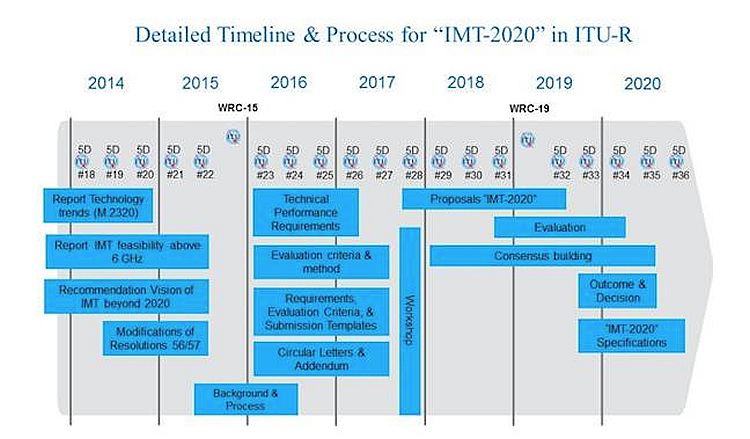
IMT-2020: The overall “Vision” for 5G systems.
For a while now organisations have been aiming to have live 5G networks by 2020, but the path there recently got a whole lot clearer, as the Radiocommunication Assembly has now endorsed a resolution which establishes the roadmap for the development of 5G.
‘IMT-2020’ is the term they’ve applied to this roadmap and it lays out their vision for 5G systems, as well as the goals, process and timeline for its development.
The roadmap was approved by radiocommunication experts from the UN’s 193 member countries and according to François Rancy, Director of the ITU Radiocommunication Bureau: “The vision for IMT-2020 and beyond opens the doors to innovation that will determine how we communicate in the future, meeting the trend towards high data traffic in the Age of the Internet of Things.”
As the name suggests, the goal is to have a 5G standard by 2020 and the ITU notes that any standard must provide a similar experience for end-users whether they are stationary or on the move and must maintain high quality service at high mobility, so it can be used in cars and high speed trains for example.
It must offer very high data rates, low latency and high reliability, allowing for new applications in healthcare, safety, business, entertainment and other sectors.
The new 5G specifications will also facilitate infotainment applications in shopping centres and at large public gatherings where data traffic is high, as well as supporting professional use by the police, fire brigade and ambulance services.
In other words, the 5G standards must be versatile and suitable for almost any use. With the IMT-2020 roadmap in place it will be easier to work towards that, with the next goal being to decide how much spectrum can be allocated to it.





